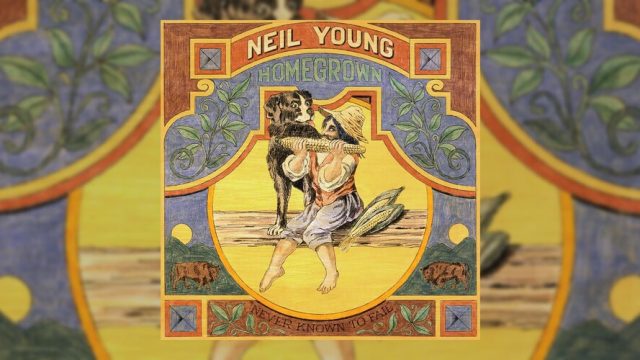These last few weeks have been a good time for recovering lost-70s treasures. Last Friday finally saw the release of Neil Young’s Homegrown. Had it been released in 1975, Homegrown would’ve initiated a serious discussion about Young’s having become a virtually peerless songwriter. A chronicle of a failed relationship, Homegrown would’ve felt more direct than Bob Dylan’s critically-acclaimed divorce album, Blood on the Tracks (1975), which had its fair share of moments of fuzzy logic.
And Homegrown was tighter and more consistent than Young’s 1972 commercial breakthrough, Harvest, whose radio-ready fare like “Heart of Gold” and “Old Man” made the album’s overall philosophical bombast easier to handle. Homegrown may not have had an obvious hit, as Tyler Wilcox points out, but there would’ve been plenty of choice cuts for DJs to spin.
Of all the reasons why Homegrown was shelved, one stands out in particular: Young was writing a ton of songs from 1973-75, and the noisier songs better fit his state of mind. That’s how, instead of Homegrown, we got Tonight’s the Night (1975), a blown-speakers tribute to the friends he had lost from their living the 70s-rock lifestyle. Although Tonight’s the Night has since become regarded as an unconventional masterpiece, the rumors that Young was holding onto an unreleased gem grew until, eventually, Young promised that someday he’d put out Homegrown.
The record is dedicated to Carrie Snodgress, the other star-crossed lover in the story. She received an Oscar nomination for Diary of a Mad Housewife (1970), another 70s work past due for a proper rerelease. Living together on Young’s ranch, they had the prototypical Southern-California-celebrity relationship, until the pressures of fame and fortune derailed it.
From the opener, “Separate Ways,” we’re already well down the track to the end of love. Levon Helm’s relentless drumbeat echoes as a reminder of what’s been left behind, crystallized in the narrator’s rueful thoughts about, “Sharin’ our little boy/Who grew from joy back then.”
The tumbling-tumbleweeds rhythm of “Try” hearkens back to the sun-drenched country rock of Harvest, only to sneak in a reference to the funeral elegy for Snodgress’s mother, whose alcoholic decline Young had witnessed firsthand. While Homegrown, like Harvest, was assembled from multiple recording sessions in different studios, the songs on Homegrown are threaded together like pages from a diary or scenes from a home movie. Many of these songs are stripped down, featuring Young solo on guitar or piano, or with a few backing musicians.
Throughout Homegrown, Young’s signature use of minor/major 7th chords that tends to accentuate the ambivalence of a musical phrase artistically melds with his inwards-turned lyrics. “Go down slow” in the song, “Mexico,” suggests little promise of a heart-changing escape. And, “It doesn’t matter if you’re the one/’Cause we’ll know before we’re done” is sung over a chordal suspension at the end of the song, “Kansas,” that portends a future in doubt—as if the bad dream of the preceding spoken-word piece, “Florida,” still lingers.
“Florida” demonstrates that exploring heartbreak as a unifying theme doesn’t require stylistic constraints. Likewise, when the heavy, electrified-blues guitar riff of “Vacancy” bursts out of the gates, it feels like nothing’s being held back. Recorded with a full backing band, “Vacancy” is a bad trip brought on by the narrator’s stoned paranoia: “Who are you? Where are you goin’ to?/What’s your name? Why aren’t you showin’ through?”
To be sure, Homegrown lives up to the expectations that have steadily increased over the years. Rather than feeling more nostalgic, the record feels less so: Young, of course, has long moved on since 1975. If he had no desire to look back then, looking back now, after all these years, puts his mid-70s songwriting in a comparatively new light.
Previously the title track had been released on American Stars ‘N Bars (1977). One of Young’s more fragmented records, it’s undergoing a critical evaluation as a cornerstone of the Americana genre. Recorded for that album, “Homegrown” trudged along like a pickup truck through a muddy cornfield. But the version, earlier recorded for Homegrown, has a slinky groove and spotlights the honky-tonk dual between Young’s lead guitar and Ben Keith’s lap slide guitar.
Also released on American Stars ‘N Bars, “Star of Bethlehem” was somewhat of a strange choice to open the second side (on vinyl). On Homegrown, however, the song is placed at the end, and thus becomes ideally positioned as the final musings on lost love: “Yet still a light is shining from that lamp on down the hall/Maybe the star of Bethlehem wasn’t a star at all.”


